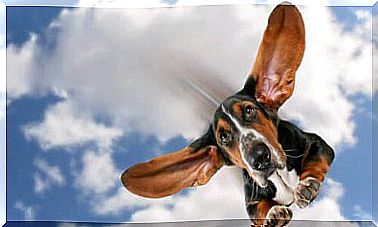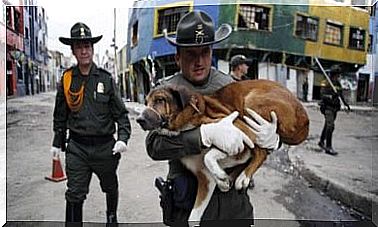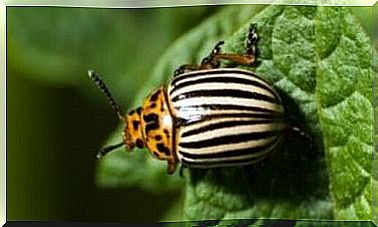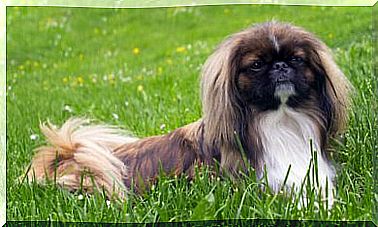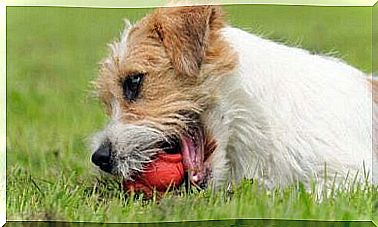How To Prevent And Treat Gastric Torsion In Dogs
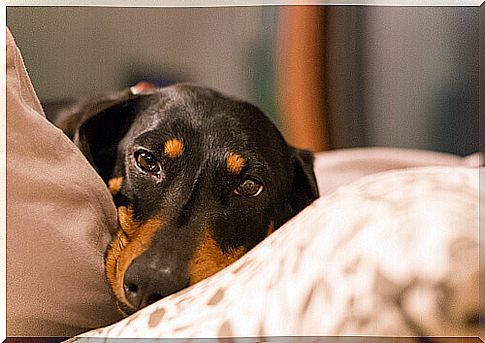
Digestive problems have a major impact on pets. They are more common in medium to large dog breeds. That’s why you need to know what to do in case your four-legged friend suffers from stomach twist.
It is true that love and dedication are essential for a pet’s health. However, these are not the only aspects to include in their education. It is essential to ensure that the internal functioning of their bodies is also fully balanced.
Regular visits to the veterinarian, vaccination and anti-parasite treatment are fundamental and always advisable protective measures.
What is gastric torsion?
The gastric torsion is also known by the English term Bloat . It is characterized by an acute distension of the stomach that generates the possibility of twisting on itself. Put simply, the distended stomach can rotate on its own axis.
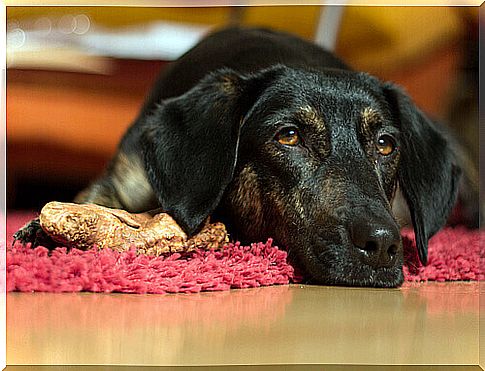
It is evident that this situation can damage other organs, such as the spleen, liver or pancreas. It also blocks blood flow and causes the loss of vital substances for the normal functioning of the body. Such a situation of insufficiency and pain leads the dog to shock .
Delay is the result of fermentation and excessive gas production during digestion. In turn, excessive fermentation generally results from an unbalanced diet . This can occur if your dog ingests too much food at a time without chewing it properly.
Gastric torsion syndrome affects large and medium-sized dogs. In smaller dogs this phenomenon is present with a much lower incidence.
Symptoms of gastric torsion in dogs
Knowing how to recognize the symptoms is essential to diagnose this disorder at the beginning and, therefore, to be able to intervene in a timely and effective manner. These are the most common symptoms of stomach torsion in dogs:
- Increase in the volume of the abdomen.
- Abdominal pain.
- Nausea and vomit.
- Fast heart rate and labored breathing.
- Mucous membranes and clear gums.
- Excessive nervousness or anxiety.
- Fatigue and loss of appetite.
The first symptom is the most obvious. Stomach dilation immediately produces an increase in the volume of the abdominal cavity. Go to the vet right away if this symptom occurs – your pet’s life is at stake.
The pain is so acute that the dog will wail simply by applying a little pressure on his abdomen. At first, the animal will constantly appear uncomfortable with stomach pain . At a later stage, he will drop down, lying down and not wanting to eat anything.
How to prevent stomach torsion?
To avoid the unpleasant and dangerous gastric torsion, there are a number of basic precautions that will keep your dog safe from this syndrome. Here are 4 helpful tips to prevent stomach torsion in dogs:
1. Proper nutrition
Choosing the right food is based on the balance between quantity and quality. It is not advisable to believe in advertising: the trendiest or most expensive foods are not always the ones to be preferred.
It is important to understand that there is never a better or worse food. On the contrary, there are baby food and products that are more suitable for your pet. Each dog has different dietary needs, according to its breed, size, age and lifestyle.
Therefore, the choice of food should be guided by the veterinarian. The owner must respect the doctor’s instructions, avoiding offering the animal human food. The latter can cause severe digestive disturbances or even cause poisoning (as in the case of grapes or small bones).
2. Never excessive portions
One of the most common mistakes is to arbitrarily increase the portions. For an aesthetic fact (the dog seems too thin) and practical (to make the animal feel good), you must never exceed in quantities and respect the guidelines indicated by the veterinarian.
In fact, in the first case, if the dog seems weak or does not gain muscle mass, it will be essential to carry out a medical examination. Similar situations can hide the first symptoms of some disease or the presence of parasites.
It may also be that the food does not satisfy or satisfy the animal, making a change in diet necessary. In any case, the help of a specialist is recommended.
As a general rule, it is advisable to divide the daily dose into 3 small portions. Never offer the whole meal of the day at once.
3. Water, never with food
Another aspect that should not be underestimated is the ingestion of too much water. To avoid problems, we recommend that you remove the water bowl while the dog is eating. Put it back in its place only 30 minutes after your friend has finished eating.
4. Physical activity after meals
To avoid problems, after your dog has eaten, we recommend that you wait at least 30 minutes before taking him for a walk or carrying out any physical activity with him.
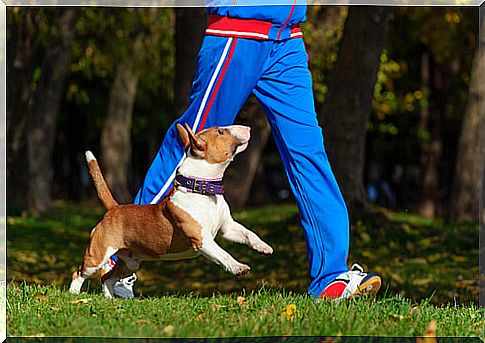
How to cure stomach torsion?
In case of early diagnosis, abdominal dilation is resolved with a simple aspiration. The vet inserts a catheter into the animal’s stomach orally and removes excess fluid or solids.
But if the torsion is already in an advanced phase , the probe can no longer be inserted. The treatment will therefore include the intervention in the operating room.
It must be said that, to rule out worse damage, veterinarians are generally more inclined to the surgical procedure. Gastric torsion, depending on the intensity, can affect different organs and to save the life of the animal it is better not to go too thin.
Source of main image: Emily Orpin.
